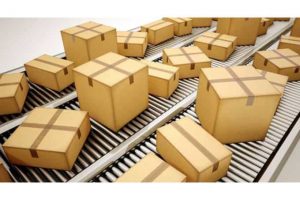
Sales in the packaging sector
2017 was marked by a slow and difficult phase of economic recovery. With just over a month to go until the end of the year, the numbers from the most diverse sectors are still timid, but they indicate that, little by little, the country is starting to get back on track.
The proximity of the December festivities is positive for the packaging sector. The second half of the year is, historically, the time when this industry niche stands out most due to the greater physical production of packaging that meets the demand for consumer goods (food, beverages, cosmetics, etc.).
A study by ABRE/FGV shows that the sector has an increase in demand every year. quarter of the year, with the last quarter being the hottest. For the chain as a whole, Christmas is reflected in the third quarter, as many of the product categories are served an average of six months before they reach the market. This way, the end of the year meets the last orders for the holidays, summer deliveries and even Easter, not to mention the supply as a whole, remembering that at this time the consumption power of families is greater.
The increase in sales
“Increasing sales at specific times is very important for the sector. The growing demand during the end-of-year festivities brings hope in relation to the economic recovery in the coming months, which leads to the return of hiring and full capacity for our customers, directly impacting the volume produced”, explains Gabriela Nobre, Marketing Manager from the COIM.
The packaging sector in times of crisis
In times of crisis there is a retraction in consumption in general, as well as non-durable goods (food, drinks, personal hygiene products, etc.) which are the main industries using packaging. There is also a lower demand and consequently reduced physical production of packaging, impacting the whole. The sector tends to present variations – both in the increase and decrease in production – that are milder compared to the durable and semi-durable goods industry. This is because around 70% of production serves the supply sector, which is less dependent on credit.
economical packaging
Another impact is the demand for economical packaging (higher cost/benefit per quantity of product) and for individual portion packaging (lower expenditure per purchase). With less income, consumers tend to look for options to save money (economic packaging) and/or reduce the quantity of products (small portion packaging) to maintain the consumption pattern achieved in more favorable economic periods.
price war
“The population does not stop consuming, but there is an exchange in relation to the product brand. We felt this effect, as we did not suffer a drop in the volume of stickers, just greater pressure in relation to prices. Our customers did not suffer from volume, but rather from revenue, as less expensive brands premiumgrew and the price war became more fierce”, analyzes Gabriela.
Source: Thema Public Relations & Press, November 23, 2017.
Available in: https://goo.gl/2Ntp63

Leave a Comment